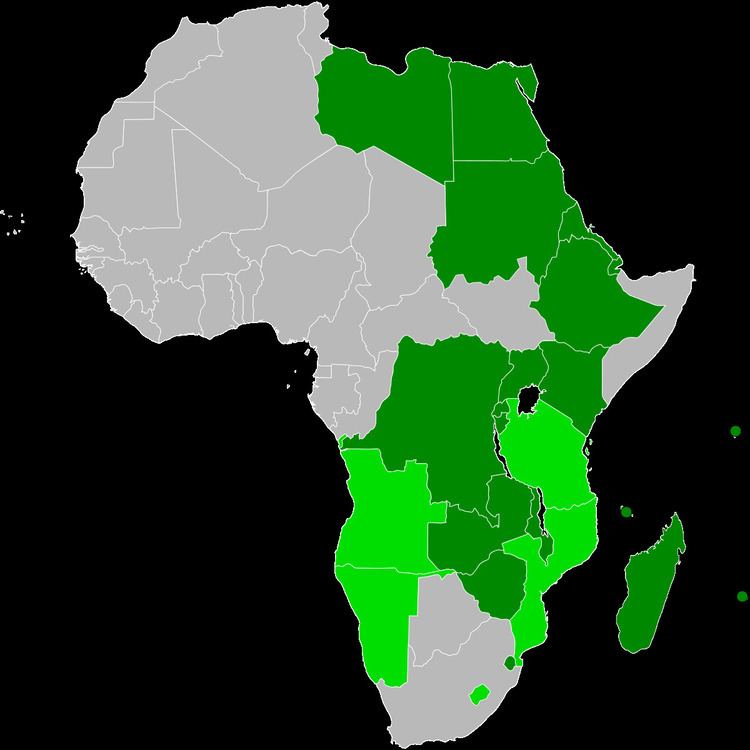Membership 19 Member States | Establishment Agreement | |
 | ||
Official languages EnglishFrenchPortuguese | ||
The Common Market for Eastern and Southern Africa (COMESA) is a free trade area with twenty member states stretching from Libya to Swaziland. COMESA was formed in December 1994, replacing a Preferential Trade Area which had existed since 1981. Nine of the member states formed a free trade area in 2000 (Djibouti, Egypt, Kenya, Madagascar, Malawi, Mauritius, Sudan, Zambia and Zimbabwe), with Rwanda and Burundi joining the FTA in 2004, the Comoros and Libya in 2006, and Seychelles in 2009.
COMESA is one of the pillars of the African Economic Community.
In 2008, COMESA agreed to an expanded free-trade zone including members of two other African trade blocs, the East African Community (EAC) and the Southern Africa Development Community (SADC). COMESA is also considering a common visa scheme to boost tourism.
Organs
According to the treaties, the following organs have decision-making power:
In the event that a member State's court is reviewing the application or interpretation of the Treaty, it may request the Courts' opinion on the matter. If the national court is a court from which there is no appeal or remedy, then court is required to refer the question to the COMESA court. The national remedies must be exhausted before a person can bring a matter to the COMESA CJ. The COMESA Court has jurisdiction over suits brought by COMESA employees and third parties against COMESA or its institutions. It also may act as an arbitrary tribunal on any matter arising from a contract to which COMESA or any of its institutions is a party. Further the Court can adjudicate any dispute between member States who agree to bring the dispute before it. Unlike the Statute of the International Court, the treaty does not state the sources of law to be applied by the Court. The Treaty and any COMESA issued legal instruments, will make the initial law to be applied, but municipal law and international law may also be determined applicable by the Court.
While the jurisdiction of the COMESA Court provides multiple avenues for the creation of standard interpretation of the Treaty, there is no specific provision of an avenue for the settlement of disputes between the institutions of the Common Market. The Court is not given the power to interpret the statutes of the other COMESA institutions. Finally, the Treaty does not specify that the Court will have jurisdiction over human rights issues within the context of Community
Due to its varying jurisdictions of the Court, the Eighth Meeting of Ministers of Justice and Attorneys General recommended to the Council of Ministers and the Authority that the Treaty be amended to provide for two divisions in the Court, the Court of First Instance and the Appellate Division. The proposal was adopted and the Court was expanded in June 2005 with the appointment of seven judges in the Court of First Instance and five judges in the Appellate Division. The work of the Court was then suspended until the Appellate Division judges were appointed and the Rules of Court for the Appellate Division were drawn up and adopted. During this reformation of the Court, the previously fully independent Court was made subject to the review of any proposed Rules of Court by the Ministers of Justice and Attorneys-General. The Court was established under the 1994 Treaty, the first set of judges was not appointed until 1998.
Unlike other African regional courts, the COMESA Court continues to receive cases. However, due to lack of funds the Court is unable to hear all its cases at certain times. Funding is only done for one session of the Court per year, these has contributed greatly to piling of cases. The backlog of cases will most certainly increase with the current growth in trade disputes in the region.
The following lower policy organs make recommendations to the above:
Other COMESA institutions created to promote development are:
